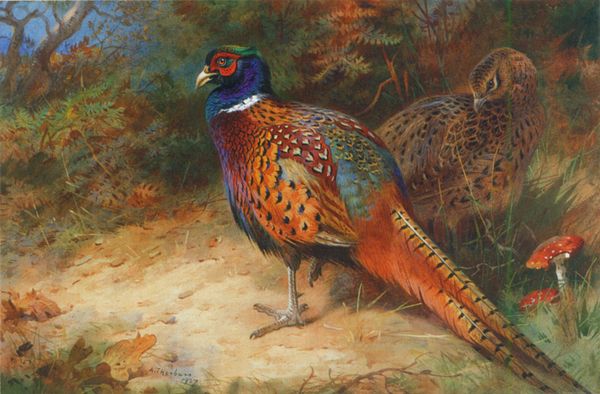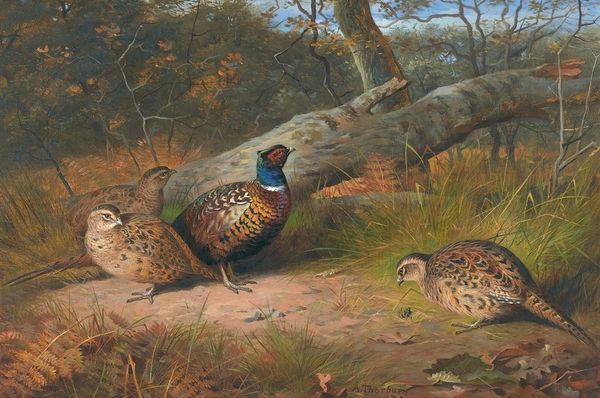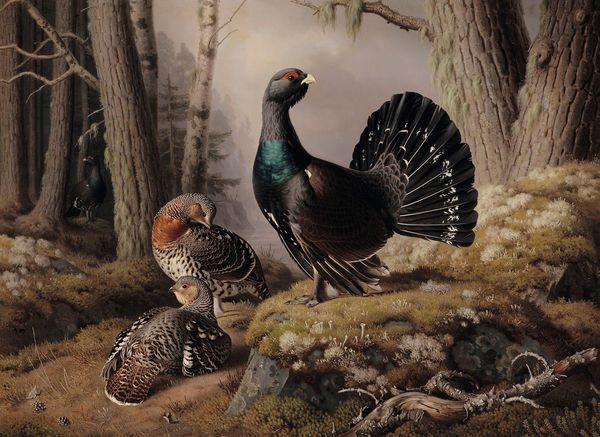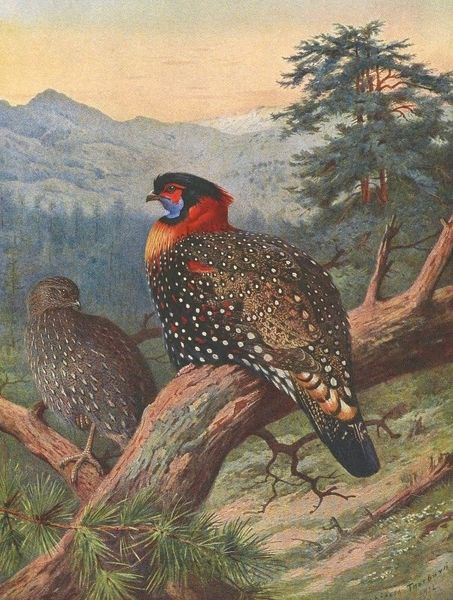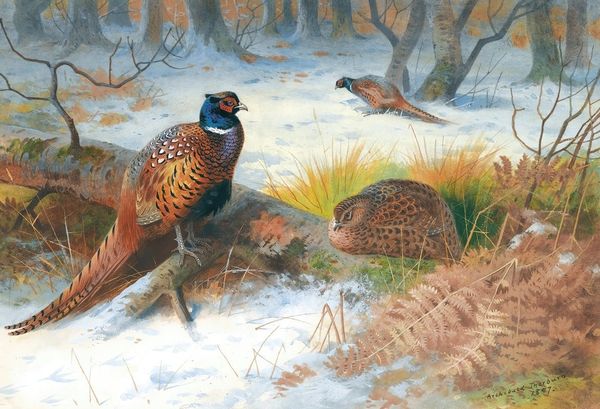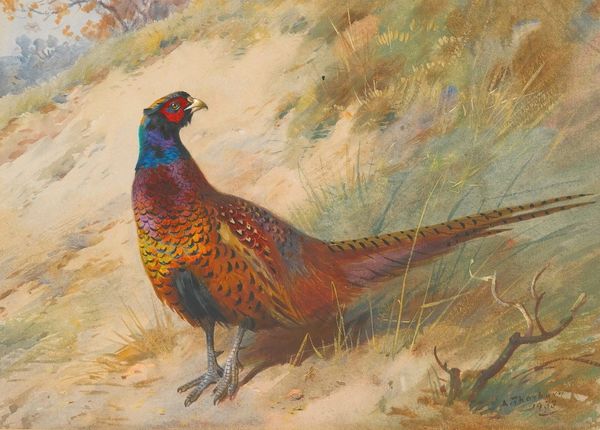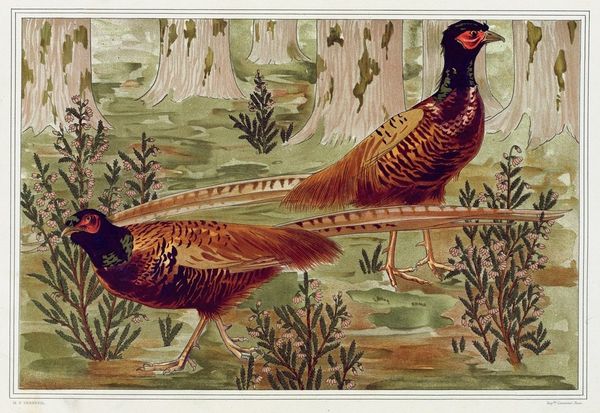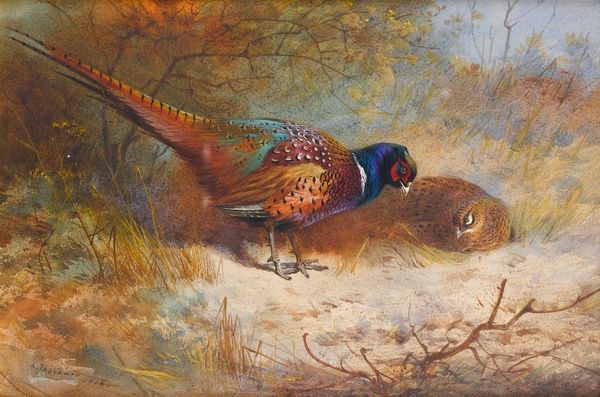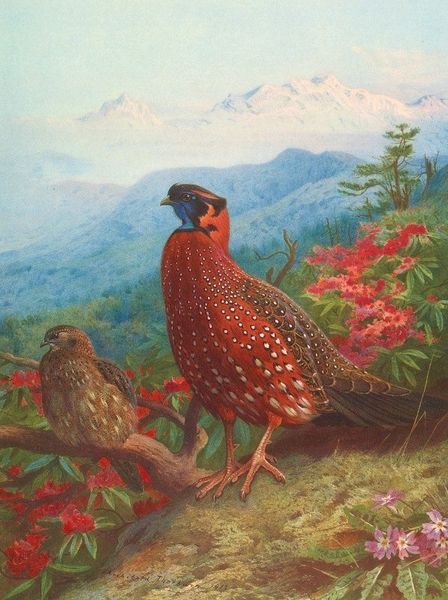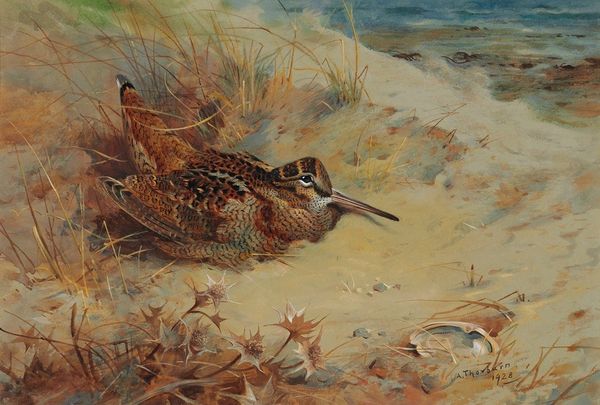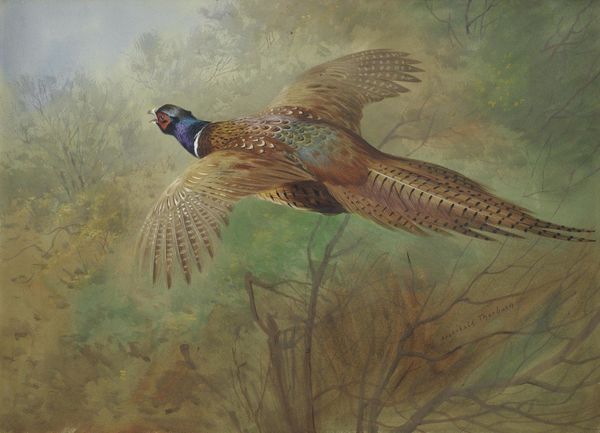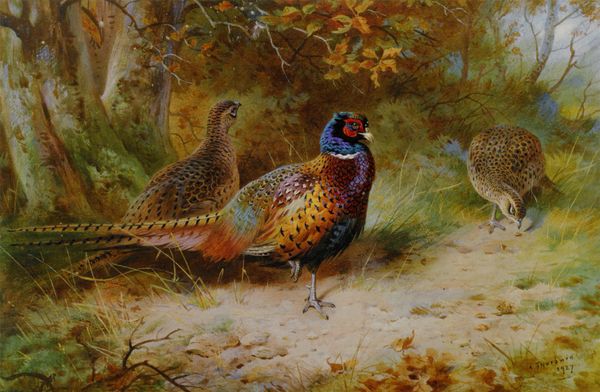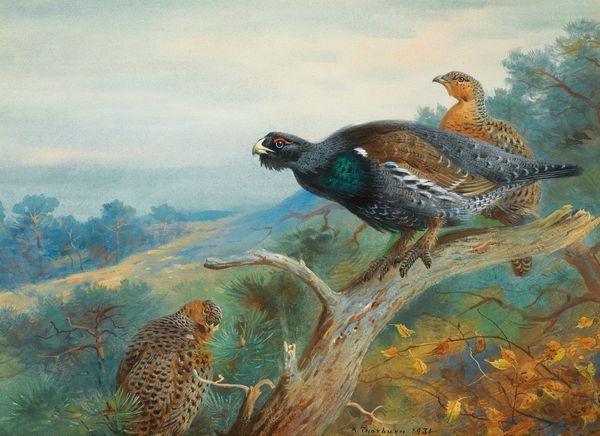
Copyright: Public Domain: Artvee
Curator: Archibald Thorburn's "Bornean Argus Pheasant," created between 1918 and 1922, captures these birds in their natural habitat, rendered with delicate watercolors. Editor: The overwhelming effect is texture—a riot of soft browns and grays, creating depth. It feels almost tactile. You can almost feel the earthy forest floor. Curator: The Argus Pheasant itself is deeply symbolic. In some cultures, its elaborate plumage represents vigilance and the all-seeing eye. It speaks to nature's inherent wisdom. The male’s feathers, in particular, become visual signifiers during elaborate courtship displays. They become part of a very important ritual, a powerful motif of connection and survival. Editor: Thinking about it technically, creating such intricate details using watercolor is astonishing. The layering must have been meticulously planned. What kind of paper was he using to withstand that? It feels almost at odds with the period, when the world was being ripped apart by the industrialized killing fields of World War One. What motivated Thorburn? Curator: Thorburn's devotion to ornithological accuracy wasn't just about rendering; he saw these creatures as integral to the delicate balance of nature. Perhaps it was a refuge, an attempt to fix what the war was destroying—the beauty, and order of the natural world. These birds became emblems, of hope and the preservation. Editor: So, by documenting and illustrating, he preserved a moment and these pheasants on paper, where their habitat might be threatened in reality. A reminder that this beauty requires protecting. The very act of depiction is thus implicated in broader acts of production and preservation. Curator: Exactly. The watercolor becomes not just an artistic medium but also a form of environmental advocacy, deeply interwoven with cultural memory. Editor: Yes, thinking about the process of watercoloring, the layers and attention devoted feels very important to considering the intent here. Thank you, that helped pull the image into a larger context.
Comments
No comments
Be the first to comment and join the conversation on the ultimate creative platform.
